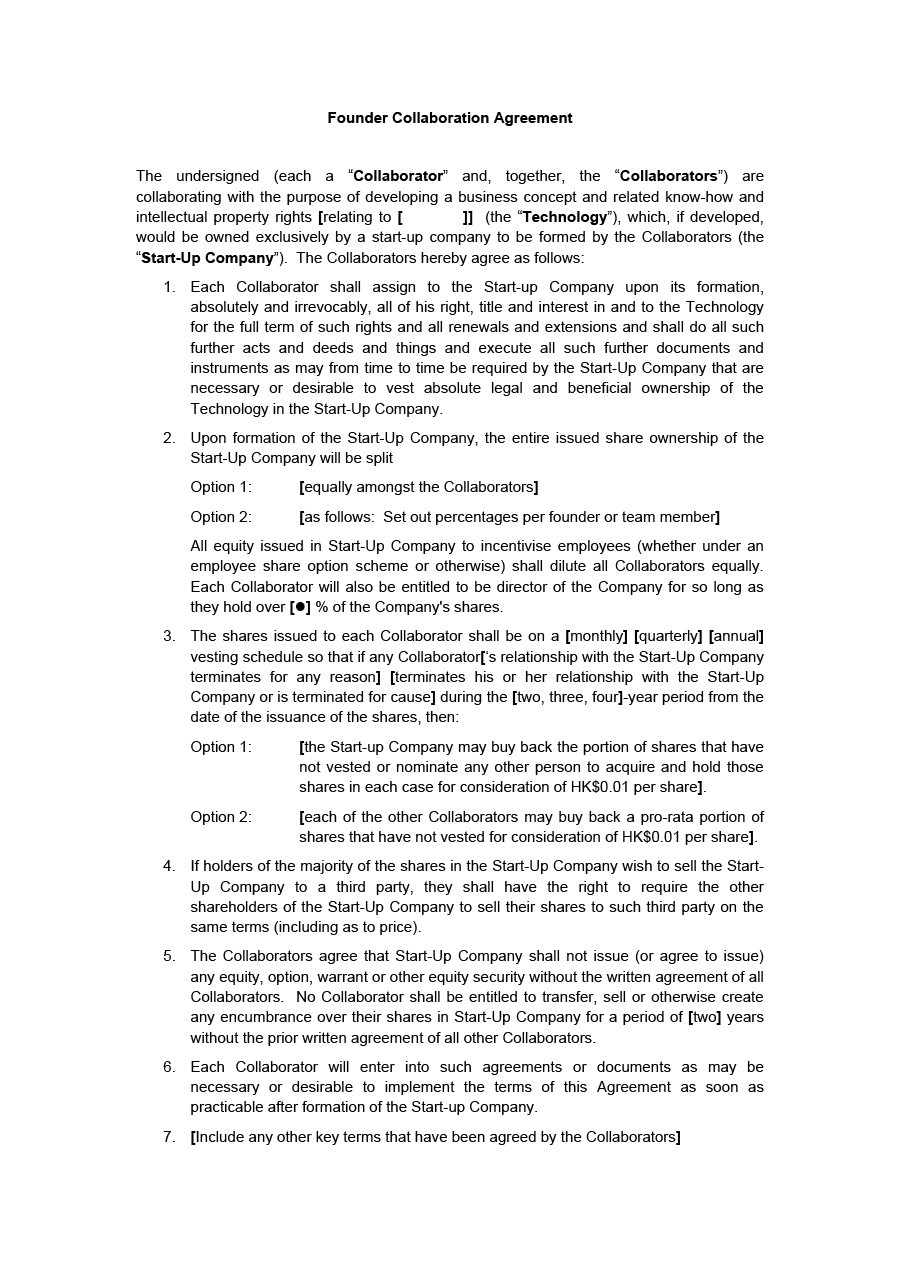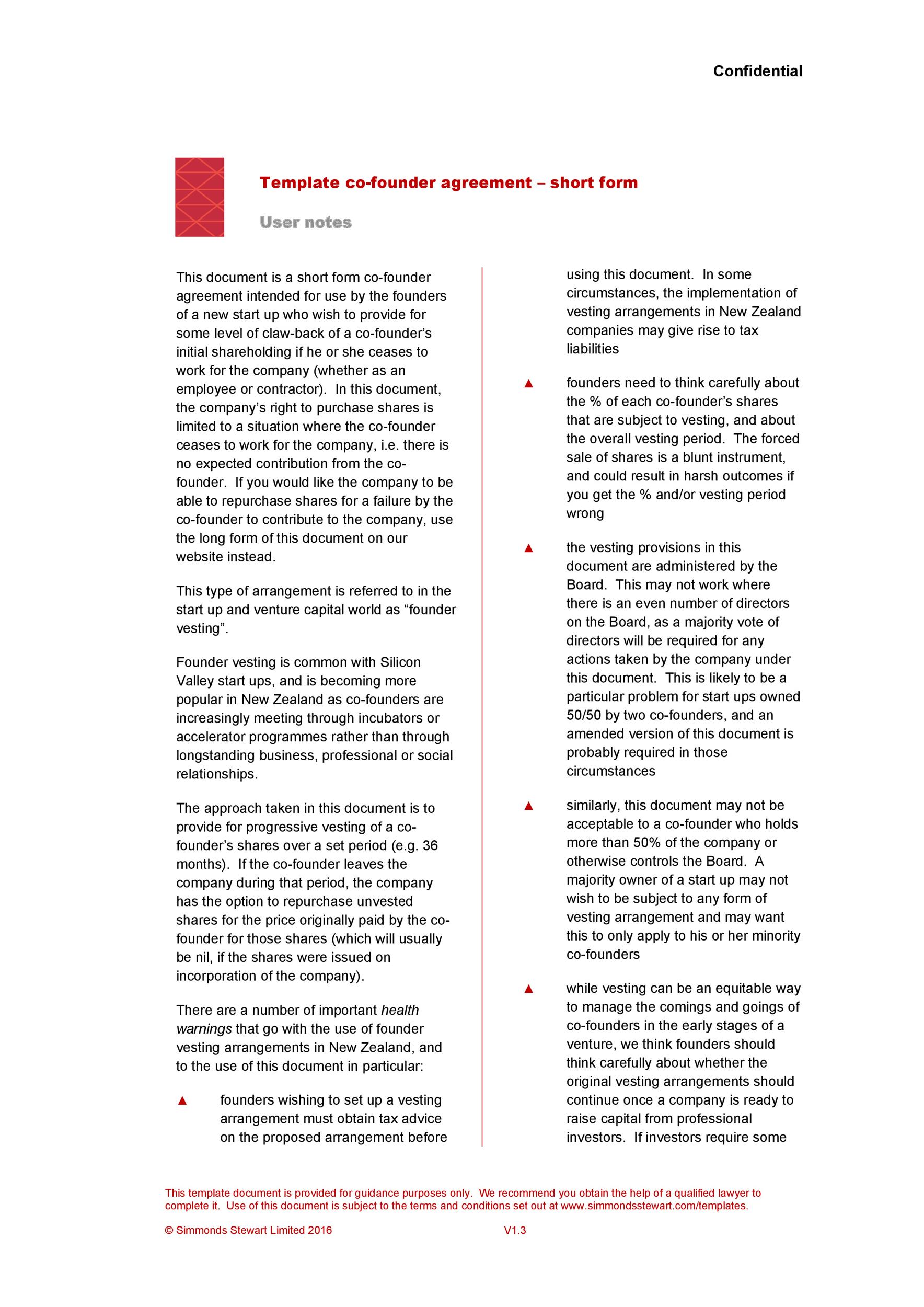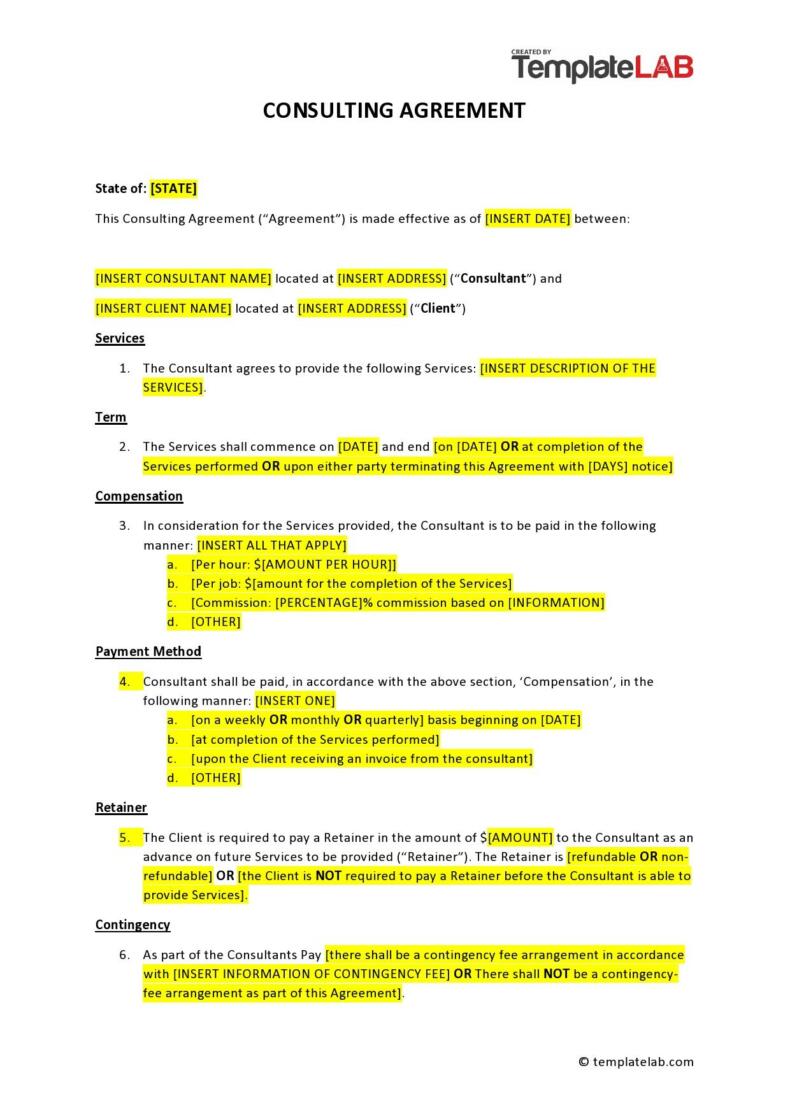A founders agreement is also known as a shareholders agreement. This is a document made for situations where the founders of a company, business or firm split the equity equally among themselves. It may also contain information about how long the founders must be a part of the agreement to fully vest their shares. The founders agreement template may also contain information about the founders regarding their roles, responsibilities, equity vested, and more.
Table of Contents
Founders Agreement Templates
When to use a founders agreement?
Whether you’re planning to start a small company or a big one, creating a founders agreement is an excellent first step to take for your business. With this document, you can establish all of the important information about the company including the decision-making processes and authorities, the distribution of ownership or shares, and more.
After creating the startup founders agreement, you don’t have to file it with your local or state government. The important thing is to create the document and keep it with all the other important documents of your company. Use the founders agreement when:
- You want to clarify the distribution of ownership for your new company or business.
- You want to establish the relationship between all of the co-founders of the company or business.
Since this document isn’t a “legal requirement” for businesses, you may also draft the document after you’ve already finalized the details of your business. After that, you can write down all of the rules of your business on the document along with other relevant information you need as your company grows over time.
Startup Founders Agreements
Consider these points before drafting a founders agreement
One of the main reasons why you must create a founders agreement is that it helps prevent ambiguity or miscommunications which may come up in the future with regards to how the co-founders manage the company. A founders agreement with vesting identifies any potential complications and risks and it contains provisions for their resolution.
Before you create your founders agreement template, you must discuss with your co-founders to finalize the most important issues like management, ownership, compensation, the board of directors, investments, and more. You need to clarify all of these issues to include them in the document.
Creating a well-drafted startup founders agreement prevents situations which might hinder the growth and development of the company or cause any uncertainty in how you manage the business. Therefore, when making the agreement, make sure to scrutinize all of the statements and details and make sure that everyone agrees with what’s written.
You may also want to consult with an expert when you’re drafting this document. This ensures that it contains all of the relevant information for the best interest of the company and all of its co-founders.
The most important elements of a founders agreement
When you’re starting a new business, there are plenty of things to consider. From the permits, contracts, and other types of documents, there’s a lot for you to do. One such document you need to create for your business is a founders agreement template or a founders agreement with vesting.
Although there’s no standard format for this document, make sure that it contains these essential elements:
- Roles and responsibilities
You must make sure that from the beginning, everyone has a clear understanding of their own roles and responsibilities. Even if you’re planning to start a small company with your closest friends, you need to specify your roles and responsibilities to create a shared and open culture for your company. - Equity ownership and vesting
You must also distribute the ownership of your company amongst all of the co-founders. This part is quite subjective and at times, it can be a delicate subject. Still, you must talk about it with your co-founders to ensure that there won’t be any miscommunications or misunderstandings that might destroy your professional relationship with each other.
In your agreement, you can state the exact percentages of shares owned by each of the co-founders. Although some companies split the shares equally, this isn’t a standard rule. Including the specific percentages in the document makes everything official and clear for everyone involved.
Also, as you’re drafting the document, think ahead. Consider the terms for market vesting for all the equity of the founders. This means that each of the company’s co-founders should earn their own equity by providing contributions which build the value of the business. Usually, vesting terms occur either quarterly or monthly over a period of 3-4 years. - IP assignment
As all of the co-founders of the company start developing a business plan, a platform or a product, they are also creating their own intellectual property or IP. Intellectual properties come in many forms. You must understand that the IP you develop for your company belongs to the company and not to the people who developed the IP.
This means that the concepts extend throughout the people who are part of the company including the employees, contractors, and consultants. This is why it’s important to include this in your founders agreement, so that no individual claims ownership of the IP.
Founders Agreement with Vesting
Tips for creating a meaningful founders agreement
Creating a founders agreement template may prove difficult, especially for those who have no experience. The good news is that there are templates available which you can use as a reference for creating your own founders agreement for your company. To guide you further, here are some tips for creating a meaningful agreement:
- Think logically
Although a startup founders agreement isn’t a requirement, it proves extremely helpful if you think logically as you’re creating it. As you draft the document, think logically together with your co-founders to create a better understanding amongst yourselves.
Drafting this type of document includes the ability to envision one venture, share your ambitions and passions, negotiations, considering different types of business cases for different issues, making projections, and learning from your past experiences. The agreement must nurture the working relationship of all its founders. - Include the founder DNA
The founder DNA refers to passions, commonalities, differences, and experiences of each and every one of the co-founders. Start by matching the overall backgrounds and experiences of all the founders to see how well you can work together. You may also want to consider any voluntary and educational activities when drafting your founders agreement.
The founders DNA is very much affected by the passion felt by the founders and their desire to reach their ambitions. But it’s also important for you to learn about and deal with the weaknesses of each of the founders in order to determine whether you need supplementary training to improve those skills. - Treat the founders agreement as a moving baseline
Doing this gives the document a deeper meaning and makes it possible for you to reconsider the logic behind this venture. This is very important so that you can come up with a model that’s innovative, agile, and scalable.
When you treat the agreement as a moving baseline, this enables you to renegotiate. Also, it encourages commitment and loyalty in terms of sticking with the business while adapting to the changes in circumstances that come with time. - Use templates as a starting point
You can use a template as a reference point when creating your own founders agreement template. Use the template as your basis or you may also look at other templates to have a better idea of what format to use or what information to include in your own agreement.
Generally, templates only include standard issues, statements, and clauses. Your job is to add or remove information according to your own situation. This is why it’s very important for all of the founders to have meetings and discussions when drafting this document. So that you can include all of the important information and come to an agreement about the contents of the document. - Think about the working order
Begin with high-level clarity as well as the alignments of the founders’ interests and their personal ambitions. Create the vision of your company and include this in your founders agreement. Have discussions and meetings wherein you fine-tune all the details of what you’re trying to achieve and why. Then align your ambitions with the vision of your company.
Based on this alignment, come up with business logic and a financial model which highlights the growth trajectories based on different scenarios. Also, come up with a vesting and breakdown schedule then fine-tune your operational model. This addresses the topic of “roles and responsibilities” which is also part of the agreement. - Deal with compensations and similar details last
Before wrapping up, deal with the compensation/salary clauses and the non-performance/termination clauses. Since performance measures aren’t very accurate for startups, tying the clauses to the collective results then dividing all of the net proceeds in a manner that’s mutually-agreeable is a smart way to deal with the issue despite the uncertainties. - Hire a start-up attorney
Before finalizing your document, hire a start-up attorney to look over it. This type of attorney addresses the obvious issues which stand out in your agreement. Provide the attorney with your most recent copy of the agreement so he can formalize its language too.




























